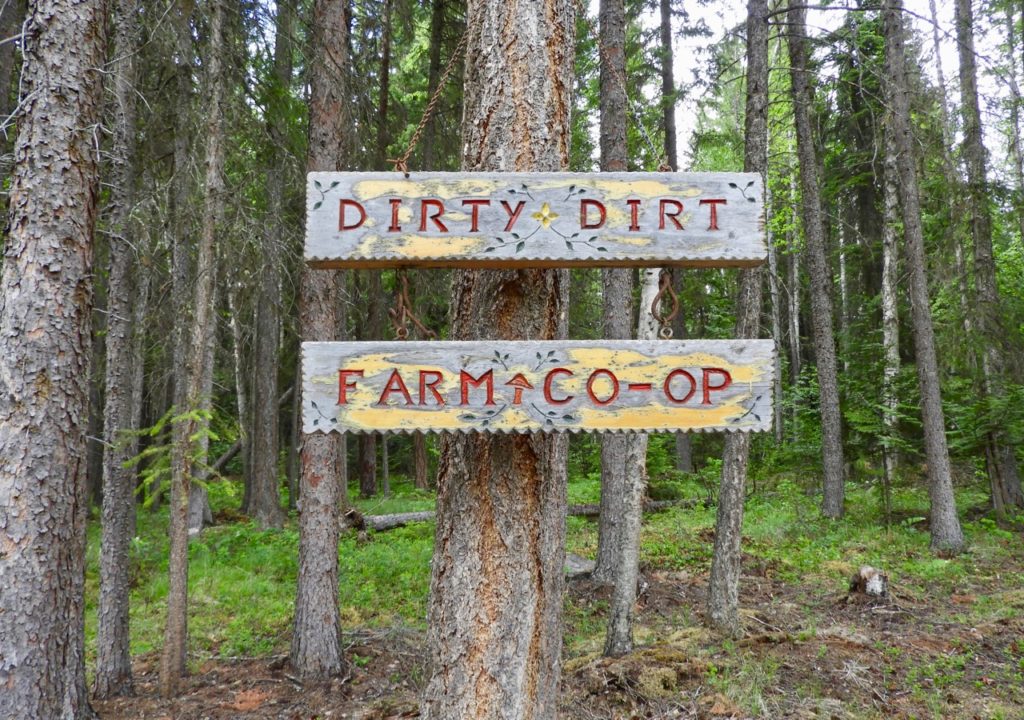
Out of all the Shuswap intensive community experiments in the 1970s, the Dirty Dirt Farm Co-op was likely one of the briefest. It began when three friends from Squamish, Nigel, Phil and Roy joined with friends who were living in an alternative community in the Cheakumus Valley and decided they would purchase their own piece of land to settle on. They travelled around the province searching for property and found 160 acres north of Falkland that had been split off the original half-section homestead.
It was raw land, with no buildings at the end of the public road behind Martin Mountain above Pritchard that must have looked like paradise to the young men who had dreams of living cooperatively. Rather than just purchase the property as tenants-in-common, they formed a legal co-op with shares and were joined by three more idealists, Nigel’s wife Martha, Bill and Laura. Their plan was to share the land and the work, but for each to have their own homesites.
That first year was busy with tree-planting jobs in the spring, creating a communal garden, developing gravity feed water supplies and building cabins during the summer, but cracks also developed with disputes over boundaries, water and other issues. Then tragedy struck when Bill died after his truck slid off a logging road.
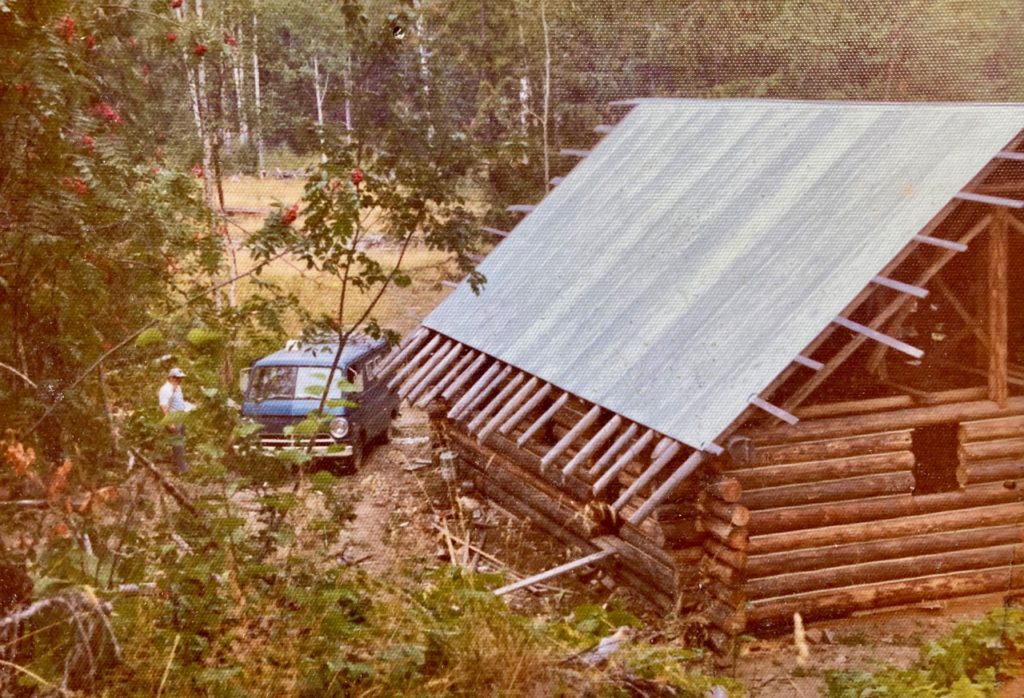
Given that the remote property sits at 930 metres, winter comes early and soon the glamour of the back-to-the-land lifestyle began to dim. The following year, the group made an attempt to raise bees, but the bears enjoyed more honey than they did, and the hives were destroyed. After Phil took a course in growing herbs, he left the property to attend school with the goal of becoming an herbalist.
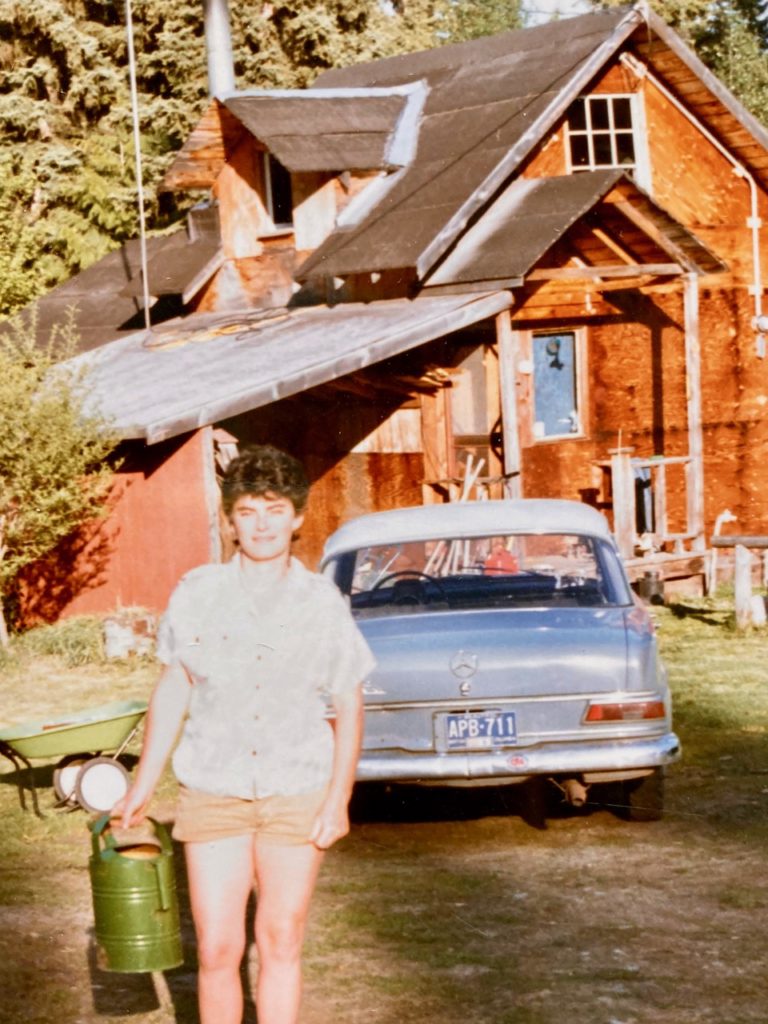
When Bill died, his share was offered to another friend from Squamish, Penny Bick, who then finished the log cabin that Bill had begun. After three more years, most of the original members had left with only Roy and Laura remaining in their cabins. Nigel and Martha moved to Kamloops where they ran a gallery and a framing shop. Phil became a successful naturopath with a clinic in North Vancouver and authored four popular books on healthy living. Roy eventually returned to the coast to pursue a career with his carpentry skills.
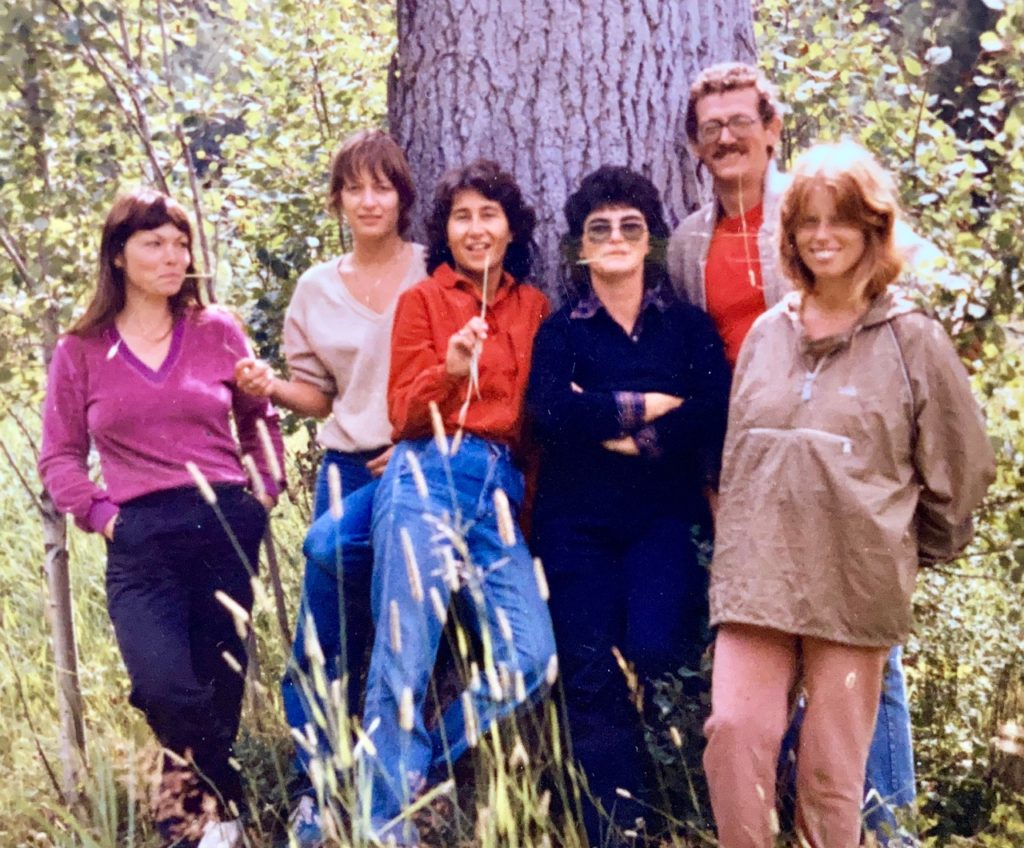
The new co-op shareholders along with Roy and Laura revised the contract with a goal to subdivide the property. This became a daunting project, as they had to contend with the Agricultural Land Reserve regulations, as well as the complexity of dealing with different jurisdictions, given the property was in the Thompson Nicola Regional District, the Shuswap Highways region and the Kamloops Forest District. It took over twenty years for them to disband the co-op and obtain their own deeds. Additionally, they managed to finally bring in power to property, which meant stringing the lines for three kilometres.
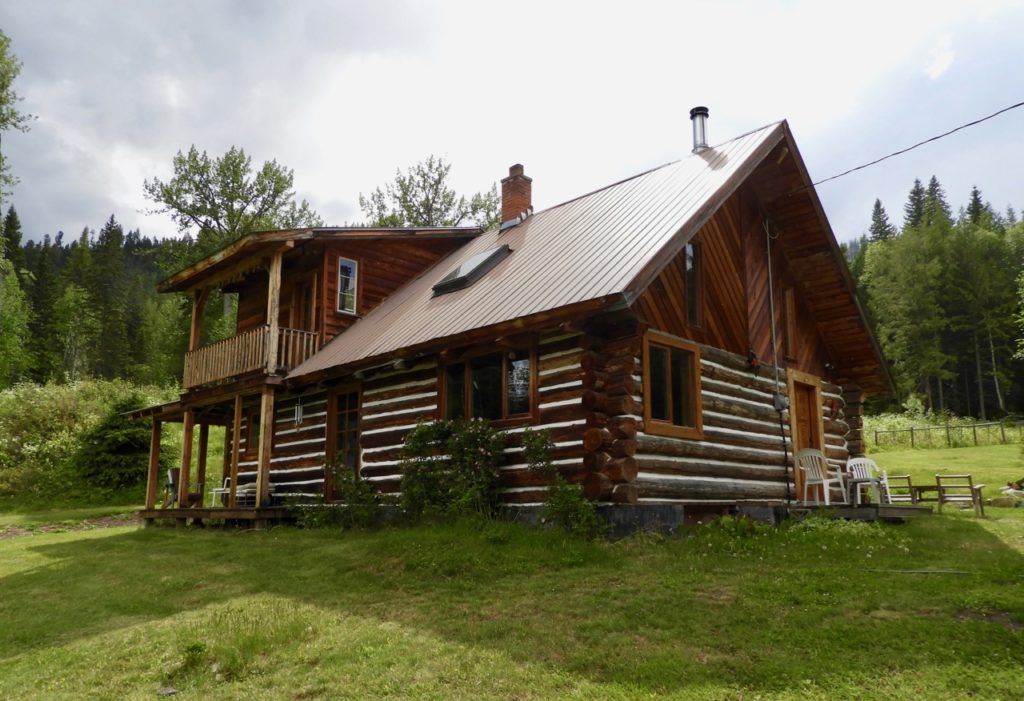
What began with great intentions, ended with discord. The elevation of the land was too high for farming and strong personalities resulted in dissension instead of cooperation. As Penny explained, “we are not raised in a cooperative society, but a competitive one – so trying to establish a cooperative lifestyle can be fraught with problems.” In order to protect their investments, they each needed their own deeds. Above all, “we were young and naïve,” she added. Out of curiosity, I drove up for a quick visit to see a bit of the Paxton Valley for the first time. Passing by some large ranches, the forest thickened when I arrived at the former co-op property. Penny’s cabin and property is now used for weekend retreats and across the road in Phil’s hand-split shake sided cabin is another couple who spends their summers there. Only Nigel’s cabin, with multiple additions is lived in year-round and Laura’s decaying cabin sits forlorn, as she passed away some years ago.
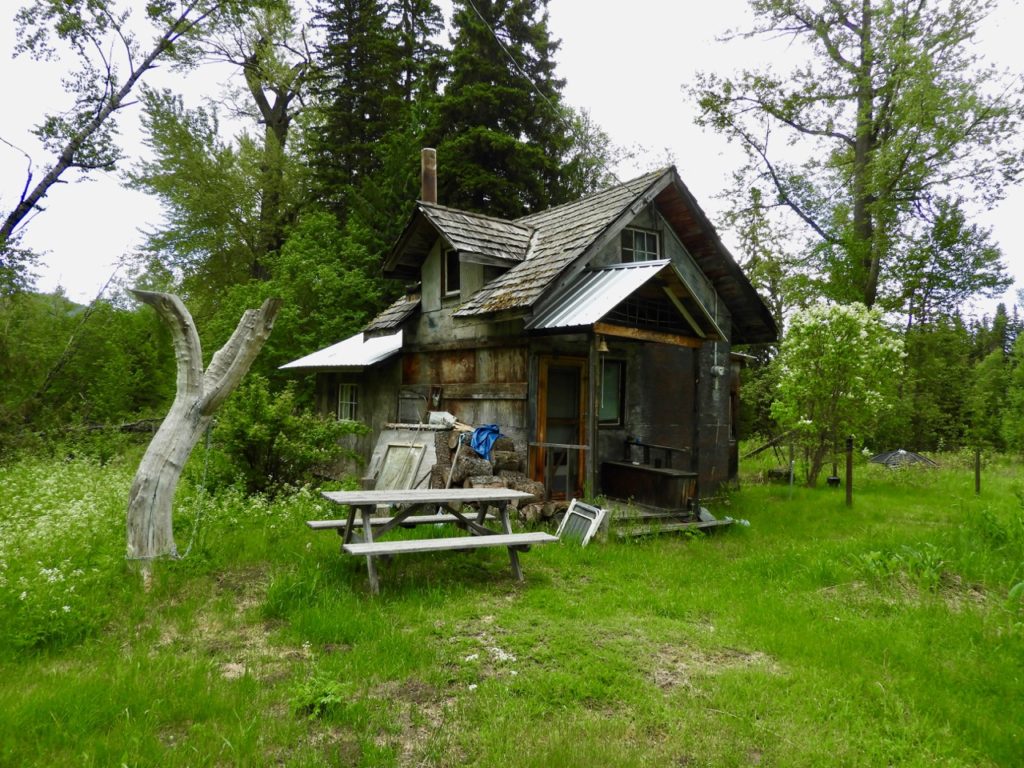
POSTSCRIPT
The question remains, that if the original Co-op members had chosen property better suited for farming, would it have lasted longer? While they did have trouble finding consensus, there lives may have been different if their land was at a lower elevation and they could have actually been able to farm it. It is a beautiful, but very remote area and what the land is best suited for is growing trees. The forest is quite healthy and the trees are growing well. It would make a good, sustainable “tree-farm” like Merv Wilkinson’s famous forest on Vancouver Island that has been producing quality timber for many decades and yet has more trees growing there now than when it was purchased because the logging has been been done selectively.
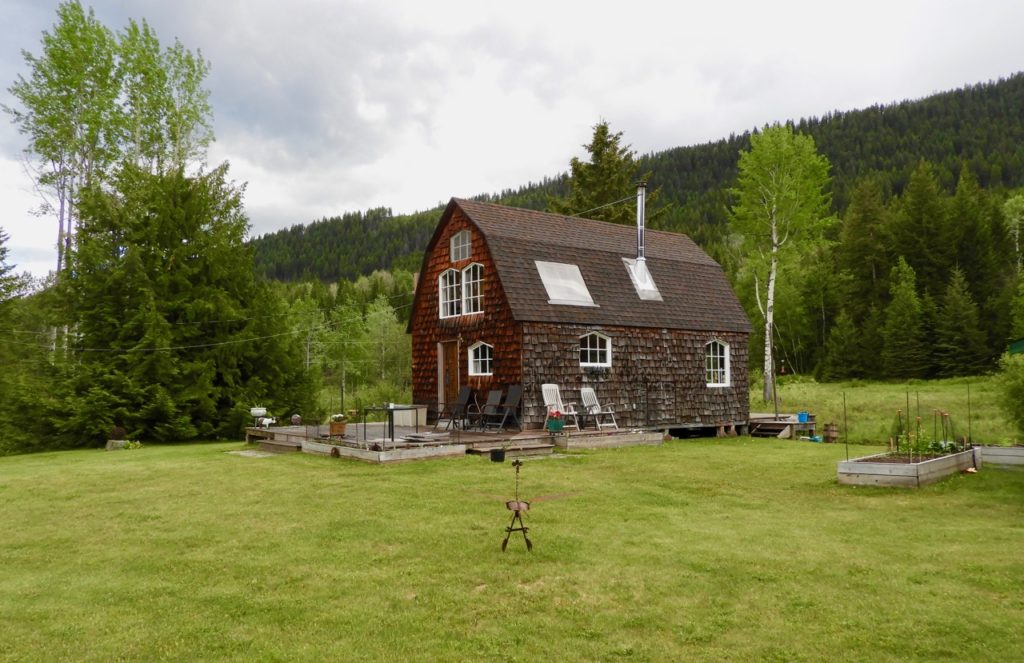
For most of the original Co-op members, their experience on the land was brief. As Phil, who changed his name to Jonn, explained, “I had more ambition than wanting to spend my winters sitting around in the bush.” Thus, the saga of the Dirty Dirt Farm Co-op became a brief time of youthful idealism for most of the original members, who moved on to successful careers and can now chalk this time in their lives as an fascinating story for their grandchildren.






